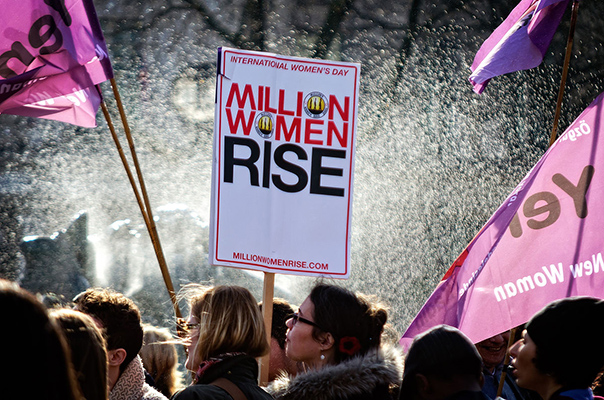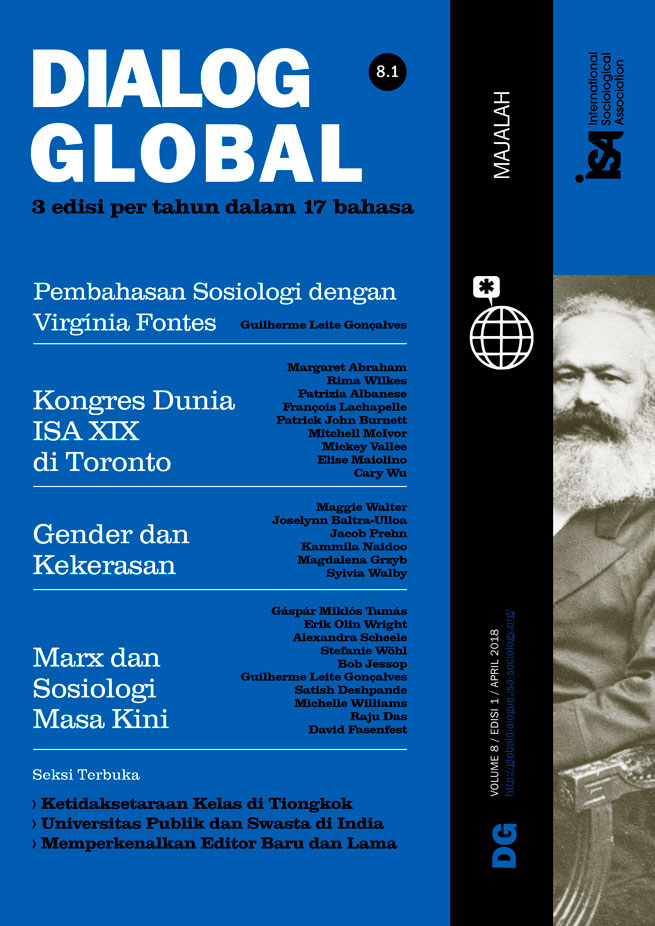Towards Zero Violence?

March 22, 2018
The UN Sustainable Development Goals (SDGs) for 2030 include Target 16.1: “significantly reduce all forms of violence and related death rates” and 5.2: “end all forms of violence against women and girls.”
Are these goals utopian? Is the world going in the opposite direction? There is a vision of a world, from a multiplicity of national, international, and global civil society groups, on which these UN SDGs draw. Developing the knowledge base to support the achievement of this vision of a world free from violence is a task in which sociology is engaged.
The realization of this vision requires the building of a theory of change. This requires a theory of violence in society and of gender and society. It requires robust conceptualization and measurement of violence to investigate and test these theories.
What increases or decreases violence?
Does economic development make a difference? Rates of violence appear to be higher for the economically disadvantaged. Increases in gender equality aid women’s resilience to violence. How is gender equality improved? Economic development may or may not lead to this, depending on whether it takes a more neoliberal or more social democratic form.
What difference do targeted interventions and support services make? Feminists have innovated multiple interventions from refuges and help lines, to specialist advisers and courts. Increased services are linked to less violence as they increase the resilience of victims and potential victims. But they are expensive, and resources for them are linked to wider gender inequalities. How important is the criminal justice system? Changes in law to criminalize violence against women have spread around the world. But women have not necessarily experienced greater justice as a result of more law.
How important is democracy? My own work, in Globalization and Inequalities, found that the rate of femicide is lower in countries where there is a higher proportion of women in parliament. The depth of gendered democracy makes a difference: increased gender democracy is linked to less violence against women. Changes in gendered political equality matter, not only gendered economic equality.
The recent financial and economic crisis centered on the Global North has led to increases in gendered economic inequality and to austerity politics that have reduced the provision of general and specialized welfare services. Potentially, this period is a test of the thesis that higher gender inequality and austerity, and reduced service provision increase gender-based violence.
To investigate such theories, it is necessary to know whether violence is going up or down and how the rate of violence varies across place and social group. This requires robust measurement of the rate of violence, including its gender dimension, which is sorely lacking.
How to measure violence?
Measurement matters. Violence against women has been nearly invisible in official statistics, despite the activities of civil society. The new International Classification of Crime for Statistical Purposes developed by the UN Office of Drugs and Crime does not make data collection on the sex of the victim of violence mandatory, treating gender as a secondary and optional tag. In addition, most victims of gender-based violence do not report their experiences to the police. Crime surveys have been developed to address this issue: victims of violence are more likely to disclose their experiences to surveys than to the police. While the sex of the victim is routinely collected by such surveys, the number of repetitions of violent events are not always recorded, or even if recorded, are not always fully counted in official estimates of violence.
Historically, most national crime surveys, including in the US and UK, capped the number of crimes reported to them that were included in the national estimates. This creates a gender bias in the statistics, since domestic violence, which is disproportionately committed against women, is a repeat crime. Reexamining the raw data in the Crime Survey for England and Wales, we (Jude Towers, Brian Francis, and I) found that when the cap was removed and all reported crimes were included in the estimates, not only was the overall rate of violent crime 60% higher, but violence against women increased by 70% and violence by domestic relations also increased by 70%.
Using this new methodology, Walby, Towers, and Francis found that violent crime increased in England and Wales after the economic crisis starting in 2008. Violence against women increased, but not violence against men. This was linked to the increase in domestic violence, which is disproportionately against women. These changes cannot be seen when using the old methodology, which disproportionately reduces the significance of repeated violence. When repeated violent crimes (disproportionately against women) are made visible, an increase in violent crime is found; when the old methodology – which systematically under-counts repeated violent crimes against the same victim – is used, no increase is found. Changes in violence cannot be understood without including the gender dimension. These findings from the UK support those theories that link the economy to violence, when that link is gendered.
Developing a robust measurement framework for comparing variations in the rate of violence over time, place, and social group requires a consistent definition of violence and its measurement categories, as well as consistent data collection methods using these categories. There have been two contrasting approaches (which are illustrated in SDGs 16 and 5), neither of which systematically collect data on the gender dimension of violence: one collects data on violence, but not on whether the victim is a woman or a man, nor on the relationship between the perpetrator and victim; the other collects data on violence against women only (not women and men). It is time to include the gender dimension (sex of the victim, sex of the perpetrator, relationship between perpetrator and victim, whether there is a sexual element to the violence) in mainstream data collection. Our recent work with a team of a dozen scholars has offered a new measurement framework for violence against women and men, which would support this development and thereby facilitate comparative analysis with robust data.
The crisis and the increase in violence against women
The crisis in the UK has cascaded from finance to the economy to the fiscal to austerity; it is now cascading into violence. This increase in violence is not general, but specifically against women, linked to the repetition of violent crime by known perpetrators. The economic crisis is gendered, its fiscal impact is gendered, and so are the implications for violence.
A new critical social science is challenging what is meant by security; the inclusion of violence against women within security is important. This means including violence at the heart of sociological theory and substantially revising how it is measured. This is sociology as a social science for a public purpose and the way in which sociology can contribute to the Sustainable Development Goals of reducing all forms of violence.
Sylvia Walby, UNESCO Chair of Gender Research, Lancaster University, UK, board member and former President (2006-2010) of ISA Research Committee on Economy and Society (RC02) <s.walby@lancaster.ac.uk>



















